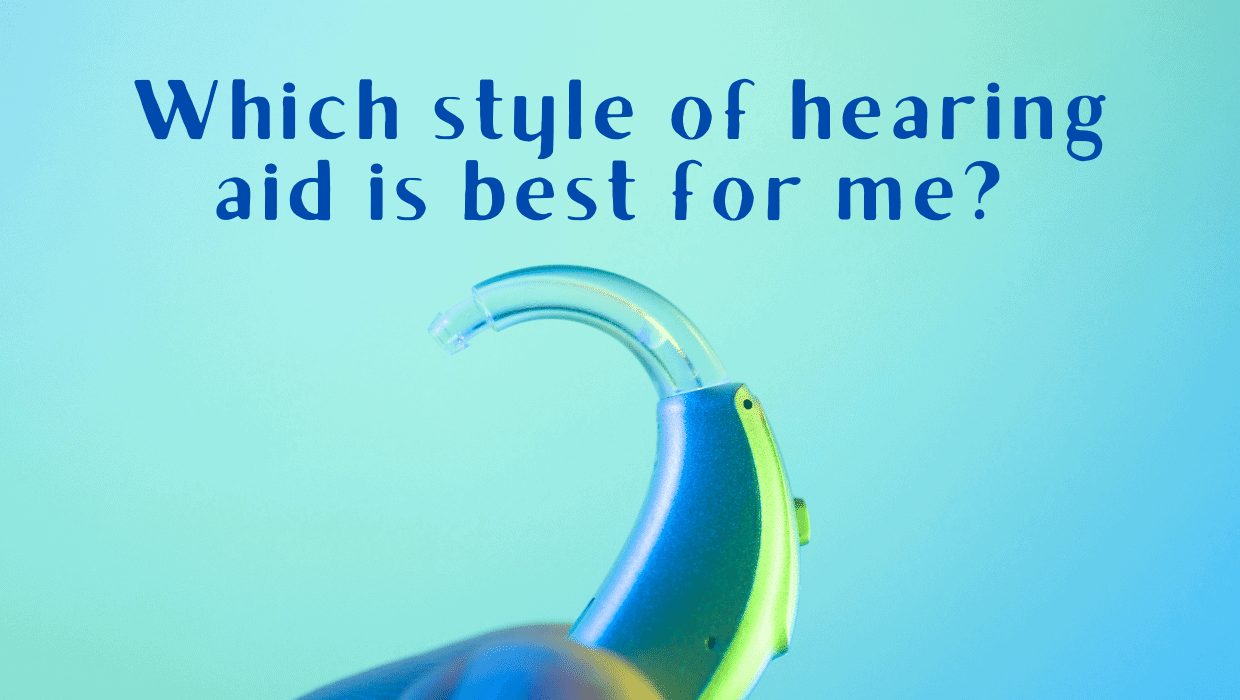- Navigating the Spectrum: Understanding Hearing Impairment Degrees - December 6, 2023
- Living with Hearing Aids in Day-to-Day Life - November 22, 2023
- A Comprehensive Guide to Hearing Aids: Exploring Styles and How They Work - November 21, 2023
Unlike choosing a new shirt at the mall, there is a lot of thought that goes into choosing the style of hearing aid that is the right fit for you. After all, also unlike a new shirt, you will be wearing your hearing aids for multiple hours a day – every day! It is important that you choose hearing aids that are functional, comfortable and make you feel confident.
Know your needs
When deciding on which style of hearing aid to choose, most people like to start with aesthetics. While it is important that you feel good about the way your hearing aids look, the best place to actually start is by analyzing your unique hearing profile and individual needs.
Firstly, it is important to understand the degree of your hearing loss. Those with severe or profound hearing losses may be best suited with Behind-The-Ear (BTE) or In-The-Canal (ITC) hearing aids, whereby those with mild or moderate hearing losses may be better suited with a wider range of styles.
It is also important to consider any additional needs you may present in your hearing profile, such as unilateral hearing loss or tinnitus.
Know your preferences
Some other important considerations to take into account before deciding on a hearing aid style are your lifestyle and preferences. Do you spend a lot of time on the phone for work? If so, you may want to look exclusively at made-for-iPhone hearing aids or those with Bluetooth technology. Do you enjoy outdoor activities and working out? Then you may be interested in looking for hearing aids with powerful wind reducing technology or durability.
Knowing the features that will help make your hearing aids better fit your lifestyle will help you to narrow down your field of options and help you focus only on hearing aids that will provide you with the features you prefer.
Know the style options
Once you have a good grasp on your individual hearing profile, hearing needs and lifestyle preferences, you should start researching the array of hearing aid styles. Below are the most common hearing aid styles, from relatively less discreet to more discreet.
Behind-The-Ear (BTE) – A BTE hearing aid hooks over the top of your ear and rests behind the ear. All of the mechanics of the hearing aid, including the receiver (or speaker), are housed in the device that fits behind the ear. A tube connects the device to an earpiece that fits in your ear.
Receiver-In-Canal (RIC) – A RIC hearing aid is similar in appearance to a BTE hearing aid except the receiver, or speaker, is in the ear canal. Instead of a tube, a small wire connects the hearing aid to the earpiece. Sometimes you’ll see a RIC hearing aid referred to as a Receiver-In-The-Ear (RITE) hearing aid.
In-The-Ear (ITE) – ITE hearing aids sit inside the ear. They are custom molded to ensure a snug and comfortable fit. These hearing aids tend to fill up the entire ear opening, making them more visible than smaller devices.
In-The-Canal (ITC) – ITC hearing aids are similar to the ITE styles, however, they fit mostly within the ear canal, making them smaller and more discreet.
Completely-In-Canal (CIC) – CIC hearing aids sit completely within the ear canal. These hearing aids are even more discreet than ITC styles, because the device sits deep inside the canal. Most of the time these hearing aids can only be seen when someone is looking directly at the ear canal.
Invisible-In-Canal (IIC) – IIC hearing aids, as their name suggests, are the most discreet style of hearing aid available on the market. These hearing aids fit completely inside the ear canal (deeper than the CIC) and are virtually invisible.
Other factors to consider
Once you have considered your hearing profile, your lifestyle and preferences, and how the hearing aids will look in or on your ears, there are a few more factors to consider when choosing a hearing aid style:
– Dexterity – smaller devices can be difficult to handle for those with dexterity concerns
– Battery life – Smaller hearing devices utilize smaller batteries that will need to be changed more often than those in larger hearing aids
– Budget – some hearing aid styles may be more affordable than others
The Hearing Doctor
If you’ve experienced changes in your hearing or are looking to update your current pair of hearing aids, we’re here to help! We provide comprehensive hearing health services, including hearing tests, hearing aid fittings, tinnitus evaluations and much more. Contact us today to schedule a consultation!

